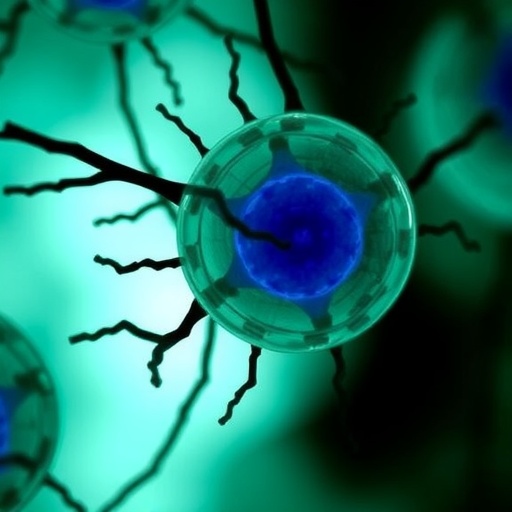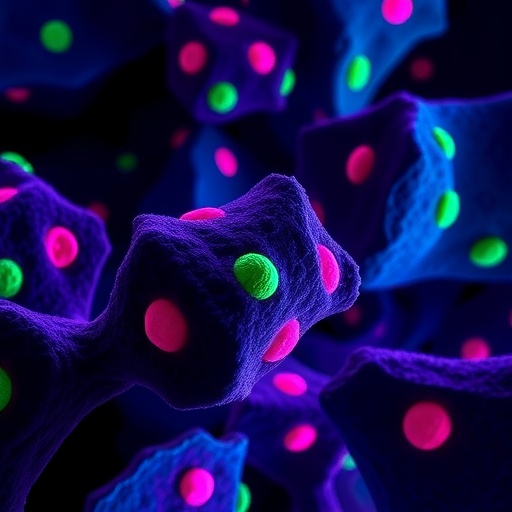The intricacies of cellular communication often resemble the complexity of human interactions. Recent explorations into endometrial cancer unveiled a critical player in this dialogue: extracellular vesicles (EVs). These tiny membrane-bound particles, secreted by cells, are emerging as vital mediators in cancer biology, significantly influencing the interaction between endometrial cancer cells and tumor-associated macrophages (TAMs). This review illuminates their role, suggesting that EVs could be central to the progression and therapy resistance observed in endometrial cancer.
Extracellular vesicles, particularly exosomes and microvesicles, carry an array of bioactive molecules, including proteins, lipids, and RNA, making them essential in intercellular communication. The significance of EVs in tumorigenesis has garnered attention for their involvement in various cancer types. They not only modulate the tumor microenvironment but also facilitate the acquisition of traits that promote cancer cell survival, proliferation, and metastasis. The mechanisms through which EVs operate present a fertile ground for research, particularly within the context of endometrial cancer, a malignancy that often proves resistant to conventional therapies.
Endometrial cancer cells can significantly alter the phenotype and function of TAMs through EVs. The relationship between these two cell types is crucial in shaping the tumor microenvironment. Through the transfer of specific RNA molecules and proteins within these vesicles, cancer cells can effectively ‘reprogram’ the macrophages, promoting a more supportive environment for tumor progression. This transformation is instrumental, as TAMs can be polarized into pro-tumorigenic or anti-tumorigenic phenotypes, ultimately influencing disease outcomes.
Research into the cargo of EVs derived from endometrial cancer cells reveals that they carry signaling molecules which may stimulate TAMs, leading to enhanced tumor growth. For instance, the presence of certain cytokines and growth factors within these EVs can push macrophages towards a phenotype that supports tumorigenesis, facilitating angiogenesis and immune evasion. Such findings underscore the importance of understanding the molecular signatures of EVs as potential biomarkers for cancer progression and prognosis.
Moreover, the therapeutic implications of targeting EVs in endometrial cancer are profound. By disrupting the communication pathways mediated by these vesicles, it may be possible to hinder the supportive role of TAMs, thereby enhancing the efficacy of existing therapies. As resistance to chemotherapy and targeted therapies remains a significant hurdle in the management of endometrial cancer, strategies that disrupt the EV-TAM communication axis could provide a novel approach to overcome this challenge.
The role of EVs in fostering a tumor-promoting environment is underscored by their involvement in the epithelial-mesenchymal transition (EMT), a process critical for cancer metastasis. EVs can facilitate the transfer of molecules that induce EMT in adjacent normal cells, converting them into cells that exhibit cancer stem cell-like properties. This cross-talk not only aids in the cancer cell’s mobility and invasiveness but also contributes to the makeup of the tumor microenvironment, further entrenching the tumor’s malignant behavior.
Additionally, the potential for using EVs as therapeutic vehicles is an exciting area of research. Due to their natural role in intercellular communication, EVs can be engineered to deliver therapeutic agents specifically to tumor-associated macrophages, providing a targeted approach to therapy. This novel method could enhance treatment outcomes while minimizing off-target effects, aligning with the growing trend toward personalized medicine in oncology.
In the context of immunotherapy, understanding the interplay between endometrial cancer cells, EVs, and TAMs could unveil new strategies for enhancing immune responses. EVs have been shown to carry immunosuppressive factors, which can dampen anti-tumor immunity. By deciphering the complex dynamics of EVs and their immune modulation, researchers hope to develop strategies that counteract these effects, reinvigorating the body’s immune system to combat cancer more effectively.
Moreover, expanding our knowledge of the molecular content of EVs can lead to the identification of novel biomarkers for early diagnosis and treatment monitoring in endometrial cancer. The presence of specific nucleic acids or proteins in the circulation has the potential to serve as non-invasive indicators of disease state, guiding treatment decision-making and improving patient prognostication.
While the promise of EV research is remarkable, several challenges remain. The complexity of EV biology requires advanced characterization techniques to elucidate their precise roles and mechanisms in cancer biology. Furthermore, ethical considerations and regulatory frameworks surrounding the use of biological materials must also be addressed as research advances towards clinical applications.
Endometrial cancer, largely affecting postmenopausal women, represents a significant health concern with rising incidence rates. The exploration of EVs in this context not only enhances our understanding of tumor biology but also paves the way for innovative therapeutic strategies. The dialogue between cancer cells and the immune system, as mediated by EVs, is a promising frontier that calls for further investigation to unlock the full potential of this unique mode of communication in cancer therapy.
As scientific inquiry advances, the potential of extracellular vesicles continues to unfold. From their role as messengers in cancer communication to their utility as vehicles for targeted therapy, EVs are at the forefront of cancer research, promising to bridge gaps in our understanding and treatment of endometrial cancer and beyond.
With ongoing studies and a deeper understanding of these cellular entities, the future of cancer treatment may well hinge on the successful manipulation of extracellular vesicle pathways. Shaping the conversation between tumor cells and the immune system is integral to formulating biologically-informed therapies that could revolutionize the landscape of cancer management.
The journey towards harnessing the power of extracellular vesicles is just beginning, but the insights gained thus far indicate a transformative potential in the fight against cancer, particularly in cases such as endometrial cancer where traditional therapies have fallen short of efficacy.
Subject of Research: The role of extracellular vesicles in the communication between endometrial cancer cells and tumor-associated macrophages.
Article Title: The role of extracellular vesicles in the communication between endometrial cancer cells and tumour-associated macrophages: a review.
Article References:
Li, F., Shi, W. The role of extracellular vesicles in the communication between endometrial cancer cells and tumour-associated macrophages: a review.
J Cancer Res Clin Oncol 151, 286 (2025). https://doi.org/10.1007/s00432-025-06318-3
Image Credits: AI Generated
DOI:
Keywords: Endometrial cancer, extracellular vesicles, tumor-associated macrophages, cancer communication, therapy resistance.
Tags: bioactive molecules in extracellular vesiclescancer therapy resistance mechanismsendometrial cancer progression factorsendometrial cancer researchEVs and cancer cell survivalextracellular vesicles in cancerintercellular communication in tumorsmacrophage phenotype alteration in cancermechanisms of EVs in tumorigenesisrole of exosomes in cancer biologytumor microenvironment modulationtumor-associated macrophages communication





